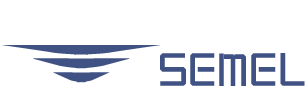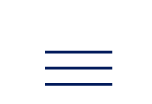
-
- Mar.
- Transfer marking method for aircraft unit marks
- Mar.
- Transfer marking method for aircraft unit marks


- Mar.Mar. 1985
-
Transfer marking method for aircraft unit marksPreviously aircraft unit marks had to be painted on. The process involved repeated work to paint and dry each color of the pattern separately, sometimes requiring 2 or 3 days for completion. For this reason, SEMEL proposed the use of industrial transfer marks (solvent type). For verification tests, the eagle mark was transferred onto the F-15s of the 7th Air Wing 204th Tactical Fighter Squadron. After performance evaluations lasting 2 years, transfer marking was officially adopted by the Japan Air Self-Defense Force. Due to the large reduction in man-hours required for the work and the fact that the aircraft can fly right away after the mark is transferred, the use of transfer marking spread to all units and squadrons.
NEXT >

-
- Aug.
- Planning and production of the Air Force Calendar
- Aug.
- Planning and production of the Air Force Calendar


- Aug.Aug. 1985
-
Planning and production of the Air Force CalendarIn order to support the Tomoshibi-kai association for families of Japan Air Self-Defense Force personnel killed in the line of duty, we planned and produced the Air Force Calendar featuring photographs of Japan Air Self-Defense Force aircraft in flight taken by photographer Hiroshi Seo. With cooperation from defense-related corporations and others, we began donating 2 million yen each year to the Tomoshibi-kai association for families of military personnel killed in the line of duty.
< PREVNEXT >



-
- Mar.
- Software that supports original Japan Self-Defense Force calculation methods
- Mar.
- Software that supports original Japan Self-Defense Force calculation methods



- Mar.Mar. 1986
-
Software that supports original Japan Self-Defense Force calculation methodsSEMEL developed a travel expense accounting system for the Japan Ground, Maritime, and Air Self-Defense Forces which involved essential calculation methods that were unique at the time. The process from concept to planning, production, and verification was completed in three years.
< PREVNEXT >

-
- Mar.
- Support for commercialization of high-accuracy tools for aircraft maintenance[Ⅰ]
- Mar.
- Support for commercialization of high-accuracy tools for aircraft maintenance[Ⅰ]


- Mar.Mar. 1988
-
Support for commercialization of high-accuracy tools for aircraft maintenance[Ⅰ]The engine is of paramount importance in an aircraft, however there are limits to what visual inspections from the outside can accomplish. It is necessary to inspect inside the various mechanisms that inject fuel into high-temperature compressed air to produce combustion and generate immense thrust. However the spaces inside a jet engine are dark and narrow, with a large number of parts arranged in a complex configuration. Consequently, precise inspections that do not permit error are necessary. For this reason, SEMEL proposed a CCD camera-type borescope, and delivered it to the 1st Air Wing. These systems became increasingly advanced and led to the development of modern medical and industrial fiberscopes.
< PREVNEXT >

-
- Mar.
- Support for commercialization of high-accuracy tools for aircraft maintenance[Ⅱ]
- Mar.
- Support for commercialization of high-accuracy tools for aircraft maintenance[Ⅱ]


- Mar.Mar. 1988
-
Support for commercialization of high-accuracy tools for aircraft maintenance[Ⅱ]SEMEL supported the commercialization of a maintenance tool (product name: Gas Charger Adapter) that uses nitrogen gas to adjust the pressure in the main landing gear shock struts of an F-15. This work was highly difficult because it is done in an extremely narrow space at the base of the strut inside the wheel well. This new tool produced a large improvement in this work.
< PREVNEXT >



-
- Jan.
- Delivery of a high-performance and low-toxicity de-icing fluid
- Jan.
- Delivery of a high-performance and low-toxicity de-icing fluid



- Jan.Jan. 1989
-
Delivery of a high-performance and low-toxicity de-icing fluidA landing overrun accident occurred at Yonago Airport in January 1988 involving an aircraft operated by Toa Domestic Airlines. Following this accident, which was said to have been caused by ice formed from snow that accumulated on the wings, what was then the Ministry of Transport began requiring stronger de-icing countermeasures. SEMEL searched for a de-icing fluid that would not harm plants, and in January 1989 proposed a diethylene glycol de-icing fluid. This product was imported from a German chemicals manufacturer (Hoechst) and delivered to the Japan Air Self-Defense Force as a means of preventing this kind of problem.
< PREVNEXT >
-
- Mar.
- Recommendation of incinerators with dioxin countermeasures
- Mar.
- Recommendation of incinerators with dioxin countermeasures



- Mar.Mar. 1989
-
Recommendation of incinerators with dioxin countermeasuresAt that time, dioxin emissions from waste-incinerating facilities were beginning to be seen as a major societal problem. SEMEL reacted quickly to find a solution, and rapidly proposed and delivered an environmentally friendly type of incinerator furnace to the Japan Air Self-Defense Force.
< PREVNEXT >

-
- Jun.
- Planning and production of the Defense Force Calendar
- Jun.
- Planning and production of the Defense Force Calendar


- Jun.Jun. 1991
-
Planning and production of the Defense Force CalendarSEMEL planned and produced the Defense Force Calendar as a joint calendar for the Japan Ground, Maritime, and Air Self-Defense Forces, and began providing support to provincial liaison offices (now provincial cooperation offices) of the Japan Self-Defense Force.
< PREVNEXT >



-
- Mar.
- Biotechnology for recovery of oil leaked from aircraft
- Mar.
- Biotechnology for recovery of oil leaked from aircraft



- Mar.Mar. 1993
-
Biotechnology for recovery of oil leaked from aircraftWaste oil is produced during maintenance and other activities in the Japan Self-Defense Force. In the event of a crash landing outside the base, spilled oil soaks into the ground and can eventually contaminate a water source. For this reason, SEMEL imported an oil decomposing agent utilizing biotechnology from the United States, and delivered it to the Japan Ground and Air Self-Defense Forces. We also proposed the use of biotechnology as a water drainage countermeasure in base kitchens. Used in combination with a grease trap, this system separates oil and water and breaks down the oil using biotechnology, reducing the burden on the final treatment equipment.
< PREVNEXT >
-
- Mar.
- Support for introduction of the first Unimog in the Japan Self-Defense Force
- Mar.
- Support for introduction of the first Unimog in the Japan Self-Defense Force



- Mar.Mar. 1993
-
Support for introduction of the first Unimog in the Japan Self-Defense ForceThe Mercedes-Benz Unimog became known worldwide as a multipurpose work vehicle. SEMEL was attracted to its ability to easily travel over swamps and rough roads, its powerful towing performance with a rugged winch, and its excellent universality with over 1,000 functions such as snowplow, front loader, and earthmover achieved by changing its wide range of available attachments. We proposed and delivered these vehicles to the Japan Air Self-Defense Force, where they were used in a wide range of activities including on the extremely rough ground of firing ranges.
< PREVNEXT >
-
- Mar.
- Coloring agent for aiding in maritime rescue activities
- Mar.
- Coloring agent for aiding in maritime rescue activities



- Mar.Mar. 1993
-
Coloring agent for aiding in maritime rescue activitiesIf an aircraft crashes into the sea, rescue activities can be conducted more efficiently if the target location is clearly known. SEMEL proposed to the Japan Air Self-Defense Force a seawater coloring agent that would color only a certain area and not spread further from the crash location. The components are harmless to marine life and fully environmentally friendly.
< PREVNEXT >

-
- Feb.
- Transfer marking method for hazard labels and other marking on Japan Air Self-Defense Force aircraft
- Feb.
- Transfer marking method for hazard labels and other marking on Japan Air Self-Defense Force aircraft


- Feb.Feb. 1994
-
Transfer marking method for hazard labels and other marking on Japan Air Self-Defense Force aircraftPreviously, marking such as warning text/symbols and inspection port numbers on aircraft bodies was done using stencils and ink. Aiming to reduce the hours required for this work, the non-solvent type transfer marking recommended by SEMEL was adopted following 3 years of performance evaluations (by the Japan Air Self-Defense Force, Mitsubishi Heavy Industries, and Kawasaki Heavy Industries). Because this method does not involve stencils and ink, it requires fewer man-hours and it is not necessary to wait for the ink to dry. This method is highly cost effective and allows repairs to be made easily by individual JSDF units.
< PREVNEXT >



-
- Mar.
- Seawater desalinization system that can also be used for drinking water
- Mar.
- Seawater desalinization system that can also be used for drinking water



- Mar.Mar. 1995
-
Seawater desalinization system that can also be used for drinking waterWhen the salt in seawater adheres to an aircraft, it begins to corrode the metal parts. In particular in Okinawa, while washing the aircrafts is essential, there is little forest on the islands that can retain water and the lack of fresh water is an issue. As a result, desalinization systems are essential. SEMEL proposed a portable system produced by Kurita Water Industries that can be used not only for washing aircraft and vehicles, but also for drinking. This system was subsequently introduced in Okinawa where there are few forests and rivers, and the shortage of fresh water is always a problem.
< PREVNEXT >
-
- Jul.
- Publication of the T-2 Blue Impulse memorial photo book
- Jul.
- Publication of the T-2 Blue Impulse memorial photo book



- Jul.Jul. 1995
-
Publication of the T-2 Blue Impulse memorial photo bookThe T-2 Blue Impulse aerobatics team flew the highly popular and domestically produced T-2. SEMEL published a memorial photo book at the time when the T-2 aircraft were eventually retired.
< PREVNEXT >

-
- Mar.
- Bird strike countermeasure that keeps birds away
- Mar.
- Bird strike countermeasure that keeps birds away


- Mar.Mar. 2000
-
Bird strike countermeasure that keeps birds awayA collision between an aircraft and a bird (referred to as a bird strike) is something that can result in a major accident. Although air cannons in airport areas are frequently used as a countermeasure, birds eventually get used to them and begin gathering again. SEMEL proposed a spray-type bird repellent that can be easily applied to the grass at airfields, and delivered it to the Japan Air Self-Defense Force. This chemical repellent is effective on birds, harmless to humans and environmentally friendly.
< PREVNEXT >



-
- Mar.
- Issue of a photo book commemorating the 50th anniversary of the Japan Air Self-Defense Force
- Mar.
- Issue of a photo book commemorating the 50th anniversary of the Japan Air Self-Defense Force



- Mar.Mar. 2005
-
Issue of a photo book commemorating the 50th anniversary of the Japan Air Self-Defense ForceSEMEL published the JASDF Today photo book to commemorate the 50th anniversary of the Japan Air Self-Defense Force. The book was composed of photos and text that were produced and assembled by photographer Hiroshi Seo, and sold 20 thousand copies – a number that was unusual for a Self-Defense Force photo book.
< PREVNEXT >

-
- Apr.
- The first to begin research into chrome-free pre-treatment agents
- Apr.
- The first to begin research into chrome-free pre-treatment agents


- Apr.Apr. 2008
-
The first to begin research into chrome-free pre-treatment agentsBonding the paint and metal strongly together reinforces the original purpose of the paints that are used to protect metal from corrosion. A pre-treatment agent is used to improve this bond. However, the pre-treatment agents that were generally used contained hexavalent chrome – a specified toxic substance. SEMEL began research into chrome-free agents even before the use of hexavalent chrome was considered a problem in Japan. In 2008, we began selling the PreKote chrome-free pre-treatment agent for aircraft that provided a good bond and was friendly to people and the environment. Verification tests are currently being conducted by the Ministry of Defense.
< PREVNEXT >



-
- Apr.
- Researching isocyanate before it is restricted
- Apr.
- Researching isocyanate before it is restricted



- Apr.Apr. 2016
-
Researching isocyanate before it is restrictedIsocyanate is contained not only in paints but in a wide range of industrial supplies. While it has been highly popular for its functionality, it is highly active and produces an irritating odor, and moreover it reacts easily with water and is toxic. As a result, it is suspected of being the cause of multiple chemical sensitivity that requires caution. Therefore SEMEL began research at an early stage aimed at eliminating isocyanate in the near future. We remain dedicated to eliminating as many substances as we can that may harm people and the environment.
< PREV



















